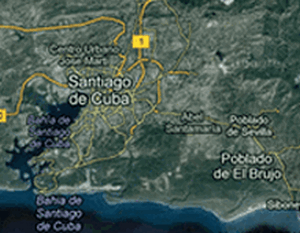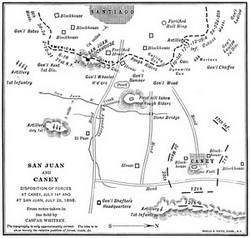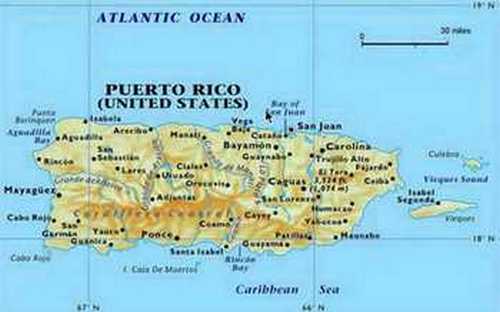Spanish American
War History
1898
Contents
Overview
The Ten Week War
The United States asserted its dual personality in an act of self
interest and the liberation of the oppressed people of Cuba. America was
about to quench its infrequent, imperialistic ambitions, and free the Cubans from an
abusive foreign occupation. Historically, Spanish speaking nations seemed to be the only stimulant that slaked American taste for international expansion.
Spain began its iron control of the Cuban island in 1511. In a few short years, the indigenous Indian population's death rate tripled and birthrate fell. Before the end of the 16th century this race was extinguished, and Africans began their bondage.
The new Cuban population were
exhibiting signs of unrest, but it was not until 1878 that they rallied
behind a call for independence. Their brief uprising was harshly
terminated by their Spanish masters. It did not help that the United
States imposed a 40% tariff on Cuban sugar in an act to prop up American
southern planters. This spelled doom for the Cuban economy. This policy
continued with the election of William McKinley in 1897. He also
favored high protective tariffs, continuation of the gold standard and
relaxation of government regulations on business. Although some commercial interests believed that less government rules meant more business with Cuba, native Cubans knew that the benefits would flow to the top. Each policy a potential blow to the Cuban economy.
The 1878 uprising was followed by a full blown revolt against Spain in 1895 that defied Spanish control and strained its resources. Atrocity stories surfaced in the American press that created its own circulation war within the fourth estate. The William Randolph Hearst newspaper, The New York Journal, actively competed with Joseph Pulitzer's New York World with lurid headlines and images of a "Cuban crisis". Hearst, apocryphally, told his eyewitness painter (Frederic Remington) to create the images of the Cuban revolution and he, Hearst, would create the war. Thus "yellow journalism" was born wherein facts were subordinated to a good story that stoked its readers into a war frenzy. United States business interests jumped onto that band wagon believing that a Cuban republic would enhance trade.
Spanish American War History
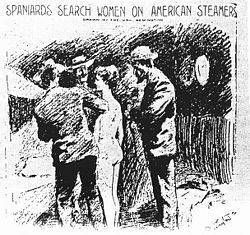
America was ready to flex its muscles. Power generated from Niagara Falls was electrifying the country. The first Ford's were rolling off the assembly line. The invention of lino type increased the numbers of newspapers that could be printed to satisfy mass readership. Newspapers employed staffs of artist-reporters whose lurid sketches and paintings were front page news.
Political theorists were looking beyond Cuban borders and envisioning domination of the Caribbean Sea. It was natural to presume that Cuba's location was a key to this strategy. Nevertheless, the new 25th President McKinley(1897) was exercising caution against instigating hostilities, and shared this sentiment with his Democrat predecessor, President Grover Cleveland. Aside from questions of morality and justification, both believed that war would damage the U.S. economy.
Spanish American War History Spanish American War History
 |
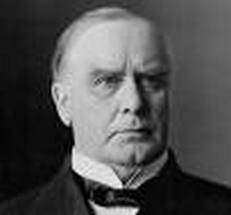 |
Grover Cleveland William McKinley
In late January 1898, the perfect storm struck Havana Harbor when the U.S.S. Maine, a second class battleship, and the U.S.S. Montgomery sailed in for a reputed courtesy call, and to respond to the U.S. Consul in Havana to protect American interests. . Their suspicions were aroused by a German squadron, already at anchor, and duly reported this to Washington D.C. At 9:40 P.M. on February 15, a huge explosion struck the Maine sinking the ship with a loss of 260 men of the 350 complement. Captain Sigsbee attempting to respond to the blast said he heard, "a crashing roar of immense volume".
Spanish American War History Spanish American War History
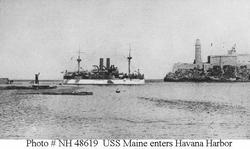 |
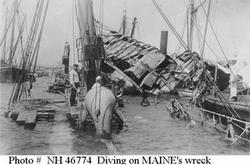 |
The New York World displayed this headline: "Destruction of Maine by Foul Play". The Journal, not to be out done, obtained (intercepted?) a letter from the Spanish Minister, Enrique Depuy de Lane to his friend in Havana stating that McKinley was a weak president who would avoid a war. They unhesitatingly published the letter which had the desired effect of further inflaming public opinion.Theodore Roosevelt, an undersecretary of the navy, officially termed the explosion an accident, but privately expressed to the contrary. (See Theodore Roosevelt and Spanish- American War.)
The slogan of the day that quickly caught popular sentiment":
To Hell with Spain
Remember the Maine
Spanish American War History
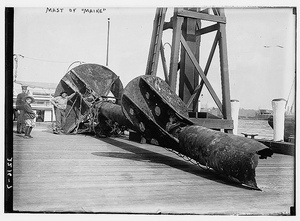
Boards of Inquiry were formed in the United States and Spain to determine the cause of the explosion. Was it internal or external? Spanish authorities concluded that the blast originated in the ship's powder magazine, but this was disputed by the American investigation that determined the cause was from a "submarine mine" that had been directed to strike the Maine. Neither report was overly dependent on factual evidence. Spain expressed sympathy and U.S. public opinion can only be described as hysterical. Competing views, without any common ground, asserted on the one hand an avaricious America, and on the other moral outrage.
Spanish American War History Spanish American War History
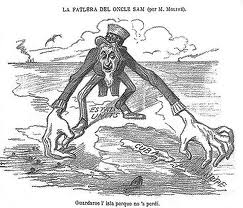 |
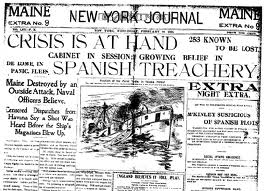 |
Emigres in the U.S. from Cuba were calling for support for a Cuban revolt. President McKinley suspended the ongoing negotiations with Spain, a country in denial about the trending American opinion for war. They were woefully unprepared to repel an invasion. Their fleet was under crewed and the ships in need of repair. Their finances were strained, not only by the Cuban guerrilla ("mambisis") revolt on that island, but also by the guerrilla insurgency led by General Emilio Aguinaldo in their Philippine Islands possession.
Add to that the drum beat in the United States for an invasion, and the insistent pressure from the Cuban emigre population in Florida led by their patriot
poet, Jose Marti, who later joined the armed insurgents in Cuba. He died there in battle on May 15, 1898. Spain had registered a complaint with the U.S. government alleging that Americans were giving aid and comfort to its enemy.
Spain had hoped that its promises of reform would placate the United States, but were largely ignored by the American public. Despite Spain's desire to avoid war. Admiral Pascual Cervera, commander of the Spanish fleet, had included in his plan an attack on Key West, Florida. However, the Admiral was a pragmatic leader who presciently said:
"----To defend an island which was ours, but belongs to us no more, because even if we did not lose it by right in the war, we have lost it in fact.---"
The Spanish had promised reform, but failed to deliver. They force women and children out of their homes and placed them in reconcentration camps in order to gain an advantage over a rebellious population.
Spanish American War History Spanish American War History
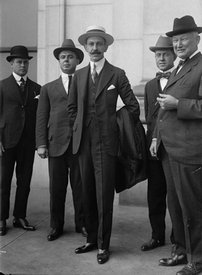 |
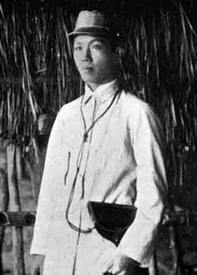 |
Marti Aguinaldo
Subsequent to the sinking of the Maine, McKinley, on March 26, sought to maintain peace. His Ambassador to Spain, Stewart L. Woodford, was instructed to deliver this message:
“The President has evidenced in every way his desire to preserve
and continue friendly relations with Spain. He has kept every
international obligation with fidelity and wants honorable peace.
He has repeatedly urged the government of Spain to secure such
a peace. Peace is the desired end. For your own guidance, the
President suggests that if Spain will revoke the reconcentration
order and maintain the people until they can support themselves
and offer to the Cubans full self-government, with reasonable
indemnity, the President will gladly assist in its consummation".
However, rampant jingoism placed President McKinley in an untenable
position. His prior caution was subordinated to uncontrollable events
and public appetite for war. He
sent a war message to Congress on April 11, 1898. The Congress on April 20 rapidly
voted approval of a Resolution noting Cuban independence, demanded Spain leave the island, promised never to annex Cuba (Teller Amendment), and authorized the President of the United States to take all necessary action to insure Cuban independence. Mutual Declarations of War followed on the next day . It was now official.
Spanish American War History
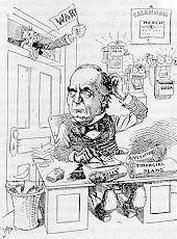
McKinley called for 125,000 volunteers to augment a small, federal standing army of 26,000. Northerners and Southerners put aside outstanding bitterness that still lingered from the Civil War to face a common enemy. The president was cognizant of this lasting enmity and, with this in mind, insisted on appointing the former Confederate General Joseph Wheeler to the general staff of the invasion forces, and commander of the army's cavalry division.
Ultimately, the volunteer force numbered over 200,000 and the Regulars were augmented by 40,000 more men.
Although the first American war activities occurred in the Pacific (May 1), the focus of America was Cuba and we start our review of military action off the Florida coast.
United States Invades Cuba
Tampa, Florida was chosen as the port of embarkation. It also was the heart of the most vociferous Cuban opposition to Spanish rule. A huge invasion fleet assembled for the six day trip over 200 miles of placid sea which, unpredictably, became extremely rough at the landing site on Cuba's south eastern coast.
V Corps, including the volunteer regiments and three divisions, led by General William R. Shafter, had undergone vigorous basic training and were reputed to be battle ready. However, this trained force arrived at Tampa Bay to find the sea transports in a state of disarray. Not enough space was allotted for the number of troops as well as equipment and horses. The 1st U.S. Volunteer Cavalry Regiment, "Rough Riders", were required to board without their horses and minus four of its companies.. They served as an infantry unit in Cuba, but its second in command, Lt. Col. Theodore Roosevelt, managed to board his mount.
Spanish American War History
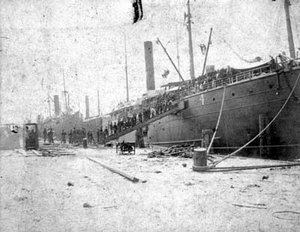
Civic Association of Port Tampa City, Inc.
About 17,000 U.S. Troops set sail for Santiago de Cuba. Many were left behind because of space constraints and unusually high incidence of tropical fevers. Santiago de Cuba was on the far eastern end of the island and deemed by the Washington strategists less defensible than Havana.On June 22, 1898, the invasion force made landfall about 10 miles east of their target city at the undefended towns of Daiquiri and the nearby Siboney. (An earlier landing on June 10 was accomplished further to the east, at the current U.S. base at Guantanamo which was acquired by lease in 1903).
The intention was to capture Santiago de Cuba, destroy the Cuban squadrons anchored in its bay, and then march overland about 500 miles to attack Havana.
Spanish American War History Spanish American War History
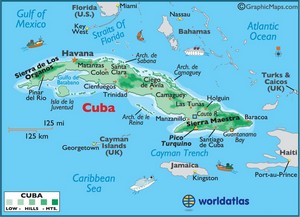 |
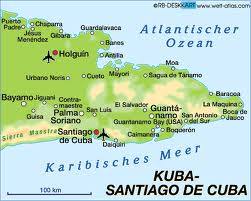 |
Battle of Las Guasimas
June 24
When the U.S. troops landed at Daiquiri, orders to the commanders on the shore were to hold their positions pending total disembarkation. Intelligence had revealed that the Spanish forces numbered about 150,000 in addition to 40,000 volunteers dug in and spread throughout the island.
General Joseph Wheeler
and his division were among the earliest troops on land. As a
Confederate officer, he earned the name "fighting Joe Wheeler". His
first act on shore was to disregard (or misunderstand) the standing
order to refrain from any offensive actions. He assembled about 1,200 of his men and pushed off into the
jungle in the northerly direction of the village of Las Guasimas. The force included the 10th U.S. regulars manned by the segregated African-American "Buffalo Soldiers" led by white officers. 1st Lt. John Pershing cut his teeth in battle with these soldiers. Hence the name "Black Jack" Pershing that identified him about 20 years later in World War I on French battle fields. The Wheeler force also included Colonel Leonard Wood's, dismounted "Rough Riders". Col. Wood was seconded by Lt. Col. Theodore (Teddy) Roosevelt, the former Assistant Secretary of the Navy.
The indiginous Cuban troops, allies in the coming war, refused to join Wheler pursuant to the standing orders not to engage the enemy until all personnel were ashore. The Cuban refusal was later approved by General Shafter, and a wrist slap to Messrs Wheeler and Woods.
Spanish American War History Spanish American War History
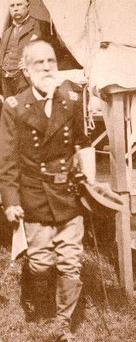 |
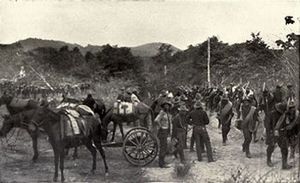 Americans moving to Las Guasimas front. Harper's Pictorial History of the War with Spain, Vol. II, Major General Joseph Wheeler |
Americans unused to tropical heat and impenetrable jungle immediately began to discard blankets and equipment, but retained their weapons and ammunition. Many that escaped death in battle would suffer from yellow fever and malaria. Resupply lines would be equally impacted by the same geography and weather. Wood"s volunteer regiment, prior to battle, was already decimated by illness and only could count on about 500 able bodied men.
Cuban scouts reported on a hidden Spanish ambush which Wheeler was able to avoid. However, he did meet the determined resistance of a 1500 Spanish rear guard that raked the Americans with their Mauser repeating rifles. This improved technology was smokeless and difficult to locate for returning fire. Both sides exchanged fire with their field guns.Ultimately, the Spaniards withdrew after the two hour fire fight. The Americans suffered 69 casualties and from the available reports, the enemy sustained 24 dead and wounded. There was no indication that the Spanish lines at the village of Las Guasimas were overrun, but the American press described it as a rout. Lt. Colonel Theodore Roosevelt, second in command under Colonel Leonard Wood, also used the word "rout" in the aftermath of the battle. The Spaniards appear to have organized an orderly withdrawal as one might expect of a force set in place to delay American advance. They fell back to Santiago and joined in its defense.
In hindsight, the Wheeler tactics of frontal assaults were vestiges of his service in the Civil War. The new technologies of rapid fire weapons, naval guns supporting land forces over greater distances, required a different approach. Officers were rethinking the old rules and designing different offensive strategies. President McKinley introduced a war room in the White House that analyzed daily reports that poured in from the front lines.
Spanish American War History
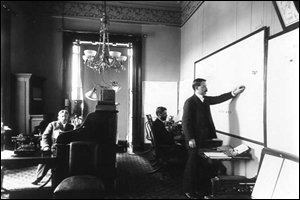
On June 28, 1898, President McKinley declared a blockade of Cuba and Puerto Rico. The rights of all neutrals were to be respected and no cargo, except contraband would be seized. Spanish merchant vessels were given immunity until May 21. An analysis of the blockade proved its effectiveness.
General Shafter ordered the attack on Santiago protected by a ring of hills, and heavily defended by the Spanish forces. The Americans marched through the tropical jungles from their camps at Daiquiri and Siboney until they reached the outer perimeter of hills.
Shafter's relationship with the naval squadron commander, Rear Admiral William T. Sampson, can only be described as contentious and rocky. Shafter believed that the invasion forces, including the navy, were subject to his command. He insisted that Sampson sail into Santiago Harbor and confront and destroy the Cervera fleet and coordinate with the land attack. This would eliminate the deck guns of the Spanish ships that would otherwise be trained on the attacking V Corps. Sampson pointedly refused. The Santiago harbor was protected by a long, narrow neck believed to be heavily mined and protected by shore guns. Sampson believed that Spanish ships would ultimately be forced into open seas, and at that point, then subjected to the fire of the better armed American vessels.
Sampson's analysis appears to be correct. He also understood that Shafter sought the glory of an army victory and disregarded the danger to the navy. Sampson also felt that the honor garnered by a Spanish surrender was earned primarily by the navy. Essentially, terrain on land and sea dictated the order of battle.
An aerial view displays the American line of march from coastal Siboney through jungle to the hill ringed Santiago and the order of battle.
Spanish American War History click to enlarge Spanish American War History
General Arsensio Linares had prepared three defensive lines to protect the City of Santiago de Cuba. The first perimeter at Las Guasimas had been eliminated by the Wheeler regiments. Linares second line was spread out over the San Juan Heights. Many of the positions spread over a wide area were thinly manned, but well equipped with the repeater Mauser rifles.
General Shafter developed a strategy that called for the elimination of resistance at El Caney; thereby securing the right flank of V Corps. Thereafter to utilize those Americans in the attack on el Caney to support the major assault on the San Juan Hill. He anticipated a short battle at El Caney which actually began at 7 A.M. with Americans bolstered by a 10 to 1 man advantage.The day dragged on and the Americans were continually repulsed by 500 Spanish regulars with greater fire power than the 5,000 Americans using old style rifles with black smoke charges. Twelve hours later the Spaniards withdrew suffering 300 casualties against about 500 Americans. They were too late to reinforce the attack on San Juan Hill.
Spanish American War History
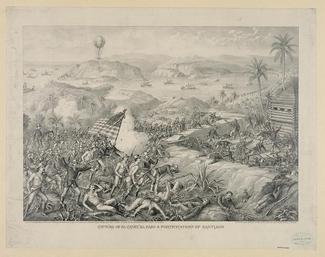
The observation balloon participating in the capture of El Caney was operated by the United States Signal Corps. It received heavy fire from the Spaniards, but was able to locate a new approach for the U.S. forces below. .
In the early morning hours, two American divisions occupied trenches at the foot of the San Juan Heights taking fire from above. They awaited General Lawton's regiments to conclude operations at El Caney. During that unexpected waiting period, no orders from the General staff were received to advance. Apparently the high command also awaited the successful outcome at El Caney. In the interim, time was on the side of the Spaniards in their well fortified blockhouse on the summit of the San Juan Hill as named by the Americans.
Spanish American War History
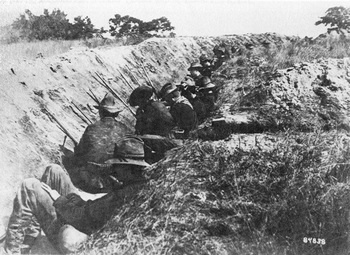
The anticipated two hour window predicted for the capture of El Caney had closed. By 10 A.M. American forces leaving their trenches advanced up the hill under the protective cover of the artillery battery at El Pozo. The 1st Volunteer Cavalry, Rough Riders, along with the 10th Cavalry Buffalo soldiers had been poised to rush an adjoining elevation that would be known as Kettle Hill (based on a kettle found on the crest used to refine sugar). As they ascended the hill, they heard the rat-tat-tat of four American Gatling guns reaching the defenders trenches and savaging them with the rapid firing weapons. After a short, but bloody skirmish, the Americans dislodged the defenders who fled to avoid hand to hand combat. After the success on Kettle hill, recently elevated to full Colonel Roosevelt (in replacement of Colonel Wood now on the general staff) rallied his men as they rushed down the hill to join the battle on the adjoining San Juan Hill. They were joined by the African-American soldiers. These fighters were called "Smoked Yankees" by the enemy.
Lt. John Pershing was more effusive:
"We officers of the Tenth Cavalry would have taken our black heroes into our arms. They had again fought their way into our affections, as they here have fought their way into the hearts of the American people".
Lt. Col. Theodore Roosevelt had a more patronizing view:
"(They) flashed their white teeth at one another, as they broke into broad grins, and I had no further trouble with them, they seeming to accept me as one of their own officers"Spanish American War History Spanish American War History
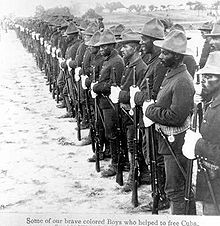 |
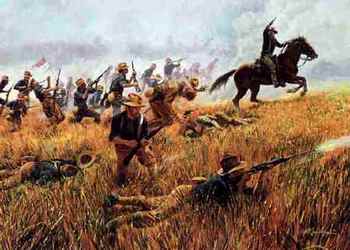 Rough Riders on Kettle Hill Mort Kuntsler |
The 4 Gatling guns, operated by Lt. John Parker's detachment, were positioned to fire on both San Juan and
Kettle Hills. Their fire power was devastating. Spanish counter attacks against Kettle Hill
were destroyed by the guns with a killing range up to 2,000 yards. These
weapons had seen limited use in the Civil War, and its efficiency had
been updated since President Lincoln had recognized their lethal
utility.
As the Americans raced up San Juan Hill, the Rough Riders on foot, followed Roosevelt charging up the hill on his mount. Many of the regiments were forced to halt below the crest lest struck by the Gatlings rapid fire that ultimately cleared the path for the Americans.
Spanish American War History
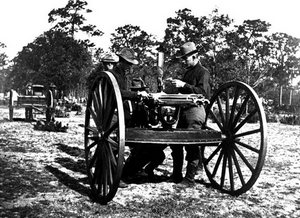
The Spanish fought hard and bravely although at a distinct manpower disadvantage. American casualties exceeded 3,000 and the Spaniards nearly 1,000 that included their General Arsenio Linares. .
The Spaniards that survived retreated to the protected breastworks and walls of Santiago City.
General Shafter chose to lay siege to Santiago City rather than continuing the attack which might have brought the war to a close on that July 1, 1898. He was suffering from malaria (and gout), and his men that survived death and wounds were heat exhausted. He evidently had overestimated the strength of the Spanish defenses, and still was demanding that Admiral Sampson enter the harbor and engage the Cervera fleet.
Colonel Roosevelt wrote his friend, Senator Henry Cabot Lodge, regarding General Shafter. He called him "criminally incompetent".
Now V Corps commanded the heights over Santiago de Cuba, but the delay aided the Spanish to strengthen their defenses. However, their water supply was now severed and their ammunition stores were severely depleted. Their new General, Jose Toral, defiantly refused the Shafter request for immediate surrender (July 3).
Admiral Cervera could foresee the fragility of the defense and made a break from the harbor, and attempted to avoid detection in the open seas. The besieging Americans noted the Cervera breakout and again demanded the city's unconditional surrender. Toral wanted terms and refused to surrender. Shafter granted time for civilians to leave the city to avoid the promised U.S. bombardment.
The Sampson naval squadron had maintained a vigil outside of Santiago harbor. On July 3, Sampson's group featured 4 battleships and the Cevera fleet, much lighter, dependent on 4 cruisers and 2 destroyers with torpedo capacity. His earlier pleas to Madrid for repairs had fallen on deaf ears. The command observing possible Spanish movement in the bay was in the capable hands of Commodore Winfield Scott Schley aboard the cruiser, Brooklyn. Admiral Sampson's and his flag ship, the cruiser, New York, were away to resupply its coal.
The U.S.S. Brooklyn spotted funnel smoke and alerted the fleet. Soon the Cevera ships made a run to escape. The American's intercepted the fleeing Spanish and their guns engaged Cervera and reduced his ships to wrecks. 1,600 sailors, as well as Admiral Cevera, were rescued and interned in the United States until the end of hostilities.
Spanish American War History Spanish American War History
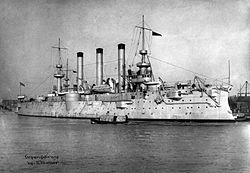 U.S.S. Brooklyn |
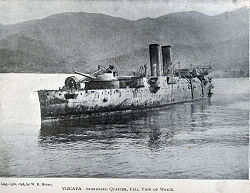 Vizcaya |
The Santiago harbor was no longer a threat. On July 10, the U.S. Navy began its bombardment of Santiago .However, land action was static, and the inaction was criticized by the press at home. The several days of negotiations reached its culmination on July 16 and July 17 when Shafter accepted the unconditional surrender of General Toral.
The land war in Cuba was essentially over. The plan to continue the campaign to capture Havana was to be delayed until the cooler autumn.
Spanish American War History Spanish American War History
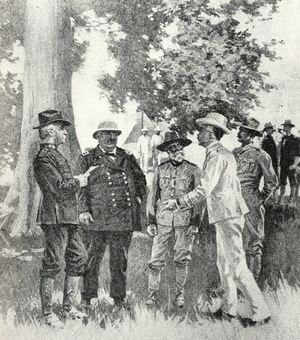 |
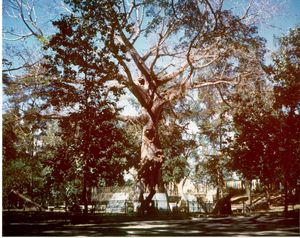 Surrender Tree Memorial (photo 1958) |
Two other subsequent engagements are worthy of note:
On July 21, the U.S. Navy was to rendezvous off the Nipe Bay on the northern coast of Cuba. The ships were to be the starting point of the second leg of the Caribbean war, the invasion of Puerto Rico. A U. S. cruiser engaged and destroyed a Spanish sloop of war and forced the scuttling of a gunboat.(The region is the birthplace of Cuban leader, Fidel Castro.)
On July 23, on the north west coast of Cuba, a small American landing party under Lt. John Heard, landed at Mani-Mani with supplies for Cuban fighters. While on the beach, Spanish cavalry attacked the Americans. They were vastly outnumbered. Lt. Heard coolly directed his men in a fighting withdrawal and reached his ship which then escaped. For bravery above and beyond the call of duty, Heard was awarded the Medal of Honor.
V Corps was drained. The ranks were rife with yellow fever, malaria and dysentery. There were no facilities in Cuba for adequate treatment. The decision was inevitable. V Corps would return home and would be replaced by VI Corps. Montauk was prepared to receive the sick. Montauk, on the eastern tip of Long Island, New York prepared a camp for the veterans of the Cuban campaign where hundreds more died of illness
The Battle of (for) Puerto Rico
As early as May 5, 1898, the U.S. Army Bureau of Intelligence dispatched an agent to Puerto Rico to assess Spanish troop strength and map potential landing sites.
On May 12, 1898, Admiral Sampson signaled United States interest in Spain's Caribbean possession, Puerto Rico. His gun boats, lying off the northern coast, shelled its major city, San Juan. Unlike Cuba, 700 miles north, there was no overt clamor by its indigenous peoples for separation from Spain. Their distaste for foreign rule would be manifested after the end of the Spanish rule in the south and western part of the island. The north, much less so, because they had been less severely exploited, and had developed its own aristocracy with Spanish blessing.
The mother country, Spain, had previously outlawed slavery on the island, provided Puerto Rico a constitution granting autonomy, and approved political parties. The source of their power and the inculcation of its culture were situated on the northern coast and, particularly, the city of San Juan. Their surrogates, ruling in other parts of the country, were not as benign, and they earned the enmity of the local population.
However, Washington, D.C. felt a sense of entitlement that included the acquisition of this 90 mile island because of its efforts to free Cuba from the Spanish yoke. In blunt terms, this was a quid pro quo for its good deeds in Cuba. Puerto Rico was a link in the chain protecting American business interests in the Caribbean region. This geopolitical policy extended into the Pacific Ocean leading to the annexation of Hawaii (July 8, 1898) and the Philippine Islands.
On June 25, the USS Yosemite imposed an effective blockade on San Juan Harbor.
Spanish American War History
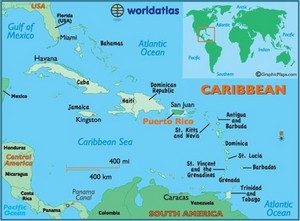
Despite contrary orders from the War Department calling for direct attack on San Juan, General Nelson A. Miles, Lt. General of all the U.S. Armies, had other ideas. He decided to employ the strategy for the invasion of Puerto Rico similar to that employed in Cuba. This strategy focused on attacking areas of lesser resistance rather than heavily defended northern capitals such as Havana and San Juan.Thus the 3,300 troops embarking from Guantanamo Bay, Cuba (July 21) were transported to the beach at Guanica on Puerto Rico's southern coast.This small village is west of the large town of Ponce later to be targeted by the Americans. In the earliest skirmish, a platoon of marines and sailors from the USS Gloucester secured the beachhead, and met with some inconsequential fire.
Ultimately, 15,000 American troops would participate in the Puerto Rican campaign. The enemy could field about 18,000 men, but 10,000 were drawn from the indigenous population.
Lt. General Nelson A. Miles met his troops in Guanica. One of his earliest acts was to issue a proclamation to the population stating that his army were "liberators" and not "conquerors".
To the east of Ponce, on August 5, Major General Brooke landed his 1st Corps and promptly seized Guayama. The strategy of the invasion forces was evident. Secure control of the entire southern coast and as much of east and west coasts prior to moving northward over the mountains toward San Juan.
The American troops met no immediate, significant resistance. Both the Cuban landing and that in Puerto Rico required marches over difficult terrain to reach the ultimate goals of capturing the capitals. In Cuba it was tropical jungle. In Puerto Rico, it was difficult mountains. However, climate and weather in Puerto Rico did not present the medical problems encountered in Cuba which had directly contributed to 2565 American deaths versus 345 deaths from combat.
Spanish American War History Spanish American War History
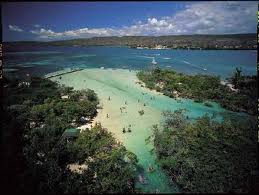 Guanica |
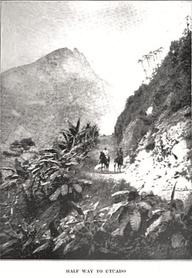 |
On July 25, several companies were ordered north, some few miles, to secure a rail terminus at Yauco that connected with Ponce. They were met in a company sized engagement by Spanish regulars and Puerto Rican volunteers. The Spaniards counter attack panicked the Massachusetts company who reformed and forced the enemy to retreat. The company was subsequently court martialed and sentenced to a hard march punishment. Officers were obliged to resign. However, the Spanish orders to destroy the rail line had failed. Many small villages were thereafter abandoned by the Spanish.
Spanish American War History Spanish American War History
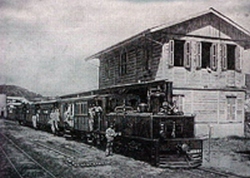 |
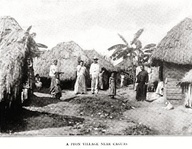 |
In early August, Nelson was in the attack mode. After Yauco, he marched on Ponce which he planned as a coordinated land and sea attack and found the Spanish had abandoned it.
On August 2, he marched his regiments to take the town of Arroyo. They were supported by the newly formed "Porto Rican Scouts". They were met by a smaller Spanish force along the road to Guayama, the next American target. American firepower forced Spanish withdrawal to Guayama. When the U.S. forces entered that town, again, the enemy had left.
On August 9, two battalions of American troops were joined by a small force of Puerto Ricans and attacked the town of Coamo. The attack began with an artillery barrage and ended with a classic pincer action in which the Spanish commander died of wounds.
Several lesser skirmishes around the southern coast, as well as at Mayaguez on the western coast, ended with the Spaniards abandoning their positions. The exception occurred on the east coast at Fajardo where a small force of Americans temporarily held the area until they were forced to retreat to their ship, and the town was reoccupied by the Spanish.
August 9: A joint Spanish and United States commission met in San Juan to discuss Spanish withdrawal. On August 12, the Spanish envoy in Washington signed a protocol agreement which effectively ended all fighting.
August 13: Hostilities were abruptly concluded with the armistice protocol leading to theTreaty of Paris (below) concluded December 10, 1898. This was against the backdrop of Cuba, Puerto Rico and the Philippines. (Battle of Manila reported below.)
Those Puerto Ricans who believed that the Americans would grant them freedom soon learned that their land had been annexed as an unincorporated territory; therefore not entitled to the protections of the American Constitution.
The price of American adventurism in the Puerto Rican campaign were five American dead.
Spanish American War History click to enlarge
Prior to the conflict, the then Assistant Secretary of the Navy, Theodore Roosevelt, chose Admiral George Dewey to lead America's Pacific Squadron. Not surprisingly his choice fell on Dewey whose combative spirit closely duplicated that of the undersecretary. The command consisted of four wooden sided cruisers and two gunboats. Ultimately, his fleet would be matched against seven Spanish cruisers.
With visions of the exploded USS Maine in the public mind, Admiral Dewey was ordered on April 27, 1898, to strike the Spanish fleet commanded by Admiral Patricio Montojo as it lay anchored in Manila Bay off the Philippine's Luzon Island.
The Philippine archipelago comprises over 7,000 islands
and only a quarter are inhabited. Luzon, one of the three largest
islands, lies closes to the Asian mainland. It was also the home base
for the Spanish Pacific empire, and particularly centered about the City
of Manila located on Luzon's southwest coast. As early as 1572, Spain was subjected to the armed revolutionary fervor of the Filipino people. This demand for independence was still rampant in the 19th century and would ultimately bedevil American administrations in to the 20th century. An insurgency would be mounted by indigenous Muslims that produced the hot war that was missing in the initial event with the Spanish.
The strike on April 30-May1 was the inception point of the Spanish American War although half a world away from Havana Harbor where the Spanish were yet to feel American ire. . The Spanish Admiral learned that Dewey's fleet was located at Subic Bay just North of Manila. The admiral did not reckon on a night time attack because of the navigational obstacles and mines in the huge Manila Bay. However, there were corridors, if known, could overcome the entry problems. Dewey's inside information was supplied to him by the American consul in Manila. The surprise, night time attack on the Spanish vessels began with full knowledge of the enemy strength, defenses and battle array.
An element that disturbed Dewey was the presence of the German navy in the bay. Were they there to pick up a rich prize ,as has been suggested, about their similar presence in Havana harbor reported by the Captain of the Maine earlier in the year? Some historians suggest that the German presence was merely to gain intelligence about the actions of two world powers. However, in an unconfirmed report, the Filipino insurgents claimed that the Germans were interfering with their operations.
Spanish American War History Spanish American War History
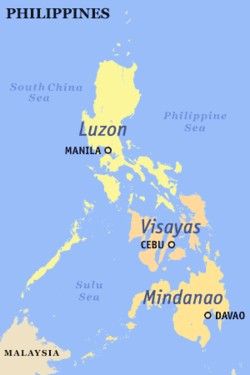 |
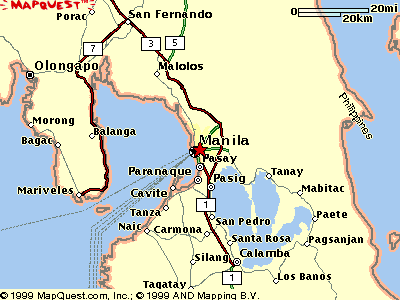 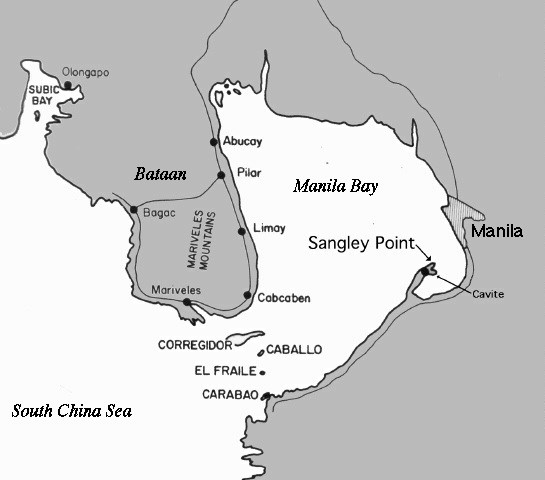 |
The naval engagement began in the early dawn hours. Admiral Dewey led the attack aboard his flag ship, USS Olympia. It was immediately evident that the Americans outgunned the enemy. The Spanish ships were ill fitted. Promised repairs from the Spanish government were delayed. A convoy destined for the Philippines, leaving Cadiz, was diverted to meet the Cuban threat. The Spaniards had a capacity of 19 torpedo tubes and no torpedoes.
Admiral Montojo's ship, Regina Cristina, was badly damaged. He sought to ram the American boats, but was repulsed. Rather than surrender he ordered all his ships be scuttled. All eight ships were destroyed.
There is a minor difference of opinion about casualties. Dewey claims there were no American deaths other than 1 from a heart attack. The Spanish claimed that as many as 13 Americans died and 77 of their sailors died of wounds. The differing versions would not have been a "minor difference" to the families of the American sailors.
Spanish American War History Spanish American War History
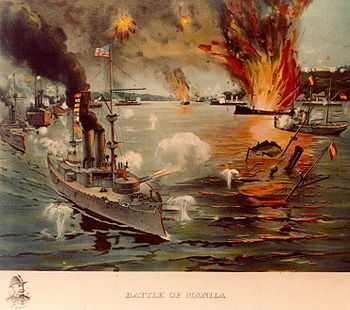 |
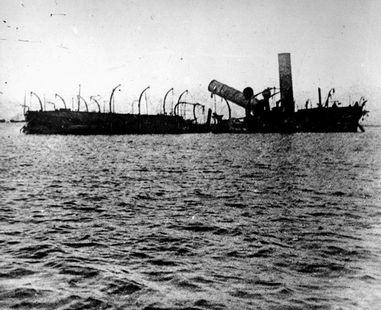 |
Print of Olympia from painting by Marshall Johnson Sunken Regina Cristina
The Spanish land forces were about 21,000 strong. Half of these men were stationed in garrisons spread through the island chain. During the past few years, many of the garrisons were under attack by Filipino guerrillas; many abandoned. The bottom line was that the defenders of Manila had little hope of reinforcement from these outlying resources.
One group of Filipinos had a substantial troop presence surrounding Manila. They had cut the water supply for the city. They believed that they were the natural allies of the Americans who had even facilitated the return of their leader, General Emilio Aguinaldo, to the island (see photo above).
Dewey now settled into a period of lengthy inactivity awaiting the arrival of VIII Corps that would embark in San Francisco under the command of Maj. General Wesley Merritt. The Spanish in Manila were still pressured by the Filipinos. In the interim, there was other activity in the Pacific. An American navy captain on June 20 accepted the surrender of Guam merely at the asking. With even less effort than that, An American junior naval officer in January 1899, claimed Wake island for the United States. These acquisitions added security to American trade routes.
On June 30, the first United States troops landed in Cavite on Manila Bay. This town had previously been the supply depot for the Spanish forces---and particularly its navy.
Over the next month, American forces would swell to about 12,000. and theoretically augmented by twice that number of Filipinos. It became evident that the Americans had no desire to coordinate with them. The Filipinos must have been perplexed. They did not understand that the Americans were not liberators. They would not recognize their government after hostilities ended--even when Aguinaldo was declared president.
The Spanish administrators in Manila recognized their situation was hopeless. However, they would not surrender to the Filipinos. This was presumably because of their supposed cultural superiority and the probability of harsh recrimination built up over 300 years of Spanish rule. Thus the Spanish secretly agreed with Dewey to lay down their arms and surrender to the Americans. Dewey would not accept the deal. However, they agreed to perform a mock battle. Whereupon on August 13, Dewy shelled two abandoned forts and by agreement sent the Spaniards the international signal demanding surrender: D.W.H.B. (Do you surrender?) The Spaniards ran up the white flag. The war in the Pacific was over one day after the actual war was concluded by the Washington armistice. Unfortunately, through lack of knowledge of the play acting, one American ship had shelled Manila, contrary to agreement, and a force of Spanish troops attacked an American unit in which 6 died.
On August 16, the news of the peace protocol reached the Philippine Islands. The Americans had already raised their flag.
American statesman and future Secretary of State John Hay (November 1898):
"Splendid little war."
Spanish American War History
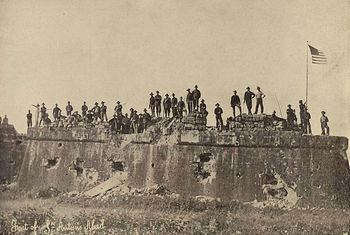
Peace Treaty of Paris
December 10, 1898
There were some in the United States Senate that raised objections to the treaty. The major objection was the moral one that questioned the imperialistic design to annex the Philippines. On the other side of the table, the Spanish attempted to retain some of the islands. McKinley threatened a continuation of the war. The deal was further sweetened with 20 million dollars paid to Spain. Despite the compromises, the treaty passed the congress with two votes to spare.
Article I.
Spain relinquishes all claim of sovereignty over and title to Cuba.And as the island is, upon its evacuation by Spain, to be occupied by the United States, the United States will, so long as such occupation shall last, assume and discharge the obligations that may under international law result from the fact of its occupation, for the protection of life and property.
Article II.
Spain cedes to the United States the island of Porto Rico and other islands now under Spanish sovereignty in the West Indies, and the island of Guam in the Marianas or Ladrones.
Article III.
Spain cedes to the United States the archipelago known as the Philippine Islands, and comprehending the islands lying within the following line---------
Spanish American War History Spanish American War History
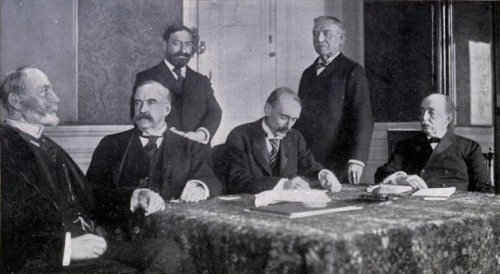 American Peace Commission PARIS Last Joint Session |
 |
Spanish American War History
________________________________________________________________________
References and Sources:
Album of American History. Vol IX, Editor; Ed James Truslow Adams, Charles Scribner's Son, New York 1969.
Dictionary of Wars, Facts on File
Encyclopedia Britannia Vol XII
Library of Congress photos
Library of Congress, Hispanic Division
Naval History & Heritage Command
Trask, David F. The War With Spain 1898,Macmillan Publishing Co. Inc., New york, 1981
U.S. Department of State, Office of the Historian
Wikipedia
See Theodore Roosevelt and Spanish American War
American Wars | Spanish American War Timeline | Spanish American War History
Top of Spanish American War History
